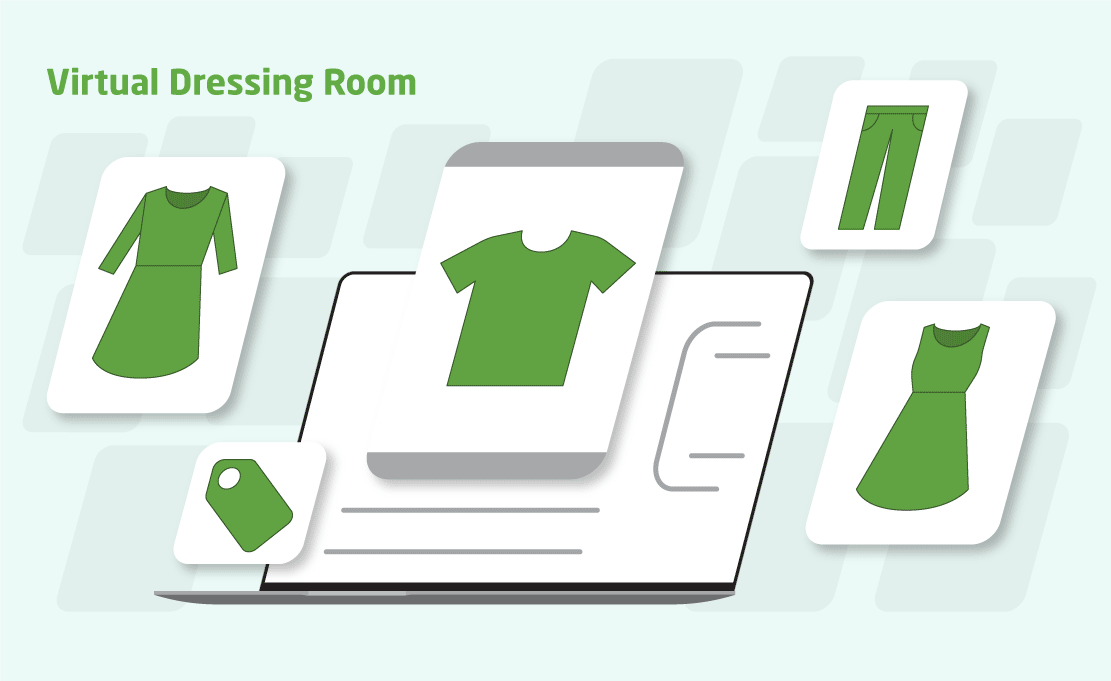The goal of the project is to create an AI-powered virtual dressing room app. The system allows shoppers to try on clothing, including pants, hats, outerwear, t-shirts, and more, by reading body data from photos. The virtual dressing room is part of an e-commerce web solution and mobile app. This AI solution adapts to different body types and tailors clothing to the person.
Virtual Dressing Room
The goal of the project is to create an AI-powered virtual dressing room app. The system allows shoppers to try on clothing, including pants, hats, outerwear, t-shirts, and more, by reading body data from photos. The virtual dressing room is part of an e-commerce web solution and mobile app. This AI solution adapts to different body types and tailors clothing to the person.
Business Challenge
The customer has faced some challenges while trying to promote his e-commerce marketplace and in sales:
- High rates of product return requests from clients (issues with product size or fit)
- High rates of shoppers leaving without adding products to the shopping cart
- Low level of personalization when shopping
After several months of operating the store and analyzing user behavior, the customer realized that size charts and standard product photos were not enough for the buyer to make an informed purchase decision and be satisfied with the final result. The customer also wanted to create something unique that would distinguish his marketplace from other competitors. As an outcome, the customer decided to invest in virtual dressing room software development and integration into his existing marketplace.
Solution
The artificial intelligence and machine learning development team implemented the solution for the virtual clothes fitting and integrated it into the customer’s existing web marketplace and mobile app.
The algorithm uses a user-uploaded image and product metadata to create realistic clothing overlays using artificial intelligence. The model analyzes the uploaded photo and determines proportions and marks key body points (hips, shoulders, waist, etc.), then “try on” clothing of the appropriate size on the person in the photo and understand whether it fits properly (whether it fits, whether the size and color are suitable). In other words, the system generates a 2D overlay based on the pose and geometry of the person’s body.
Data security and privacy. All information processing and analysis takes place on the server, images are uploaded to Azure Blob Storage, and processed in the Azure Kubernetes container environment. After the session ends, no biometric data is stored.
Business Impact
The customer notes the following outcome of the integration of the virtual dressing room into his clothes shop:
- The session time and the user’s time spent viewing products increased
- The number of orders created and paid for after viewing products increased
- The percentage of product returns decreased
- The number of positive reviews from customers about the store, its service, and the quality of services provided increased
- Due to the increase in the number of orders and the decrease in the percentage of product returns, profit increased according to quarterly financial statements


